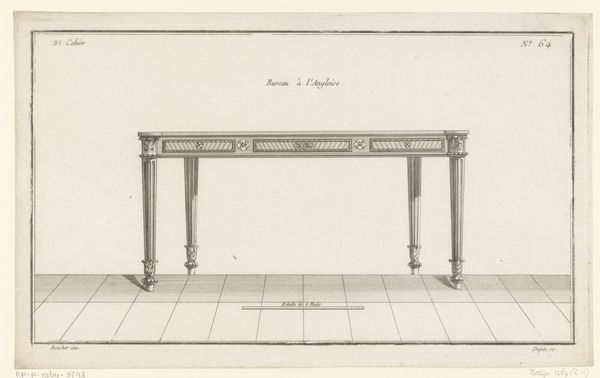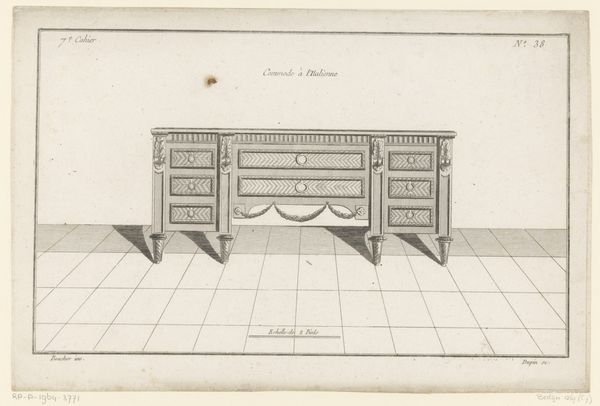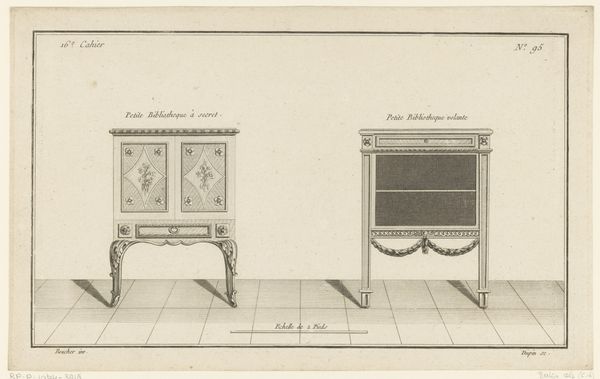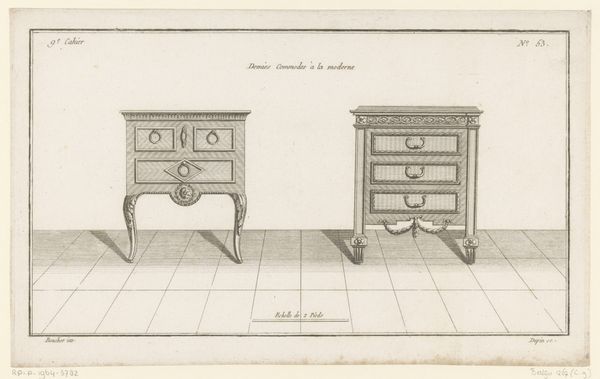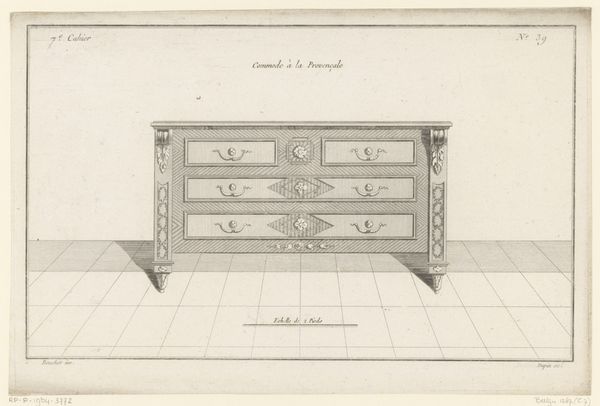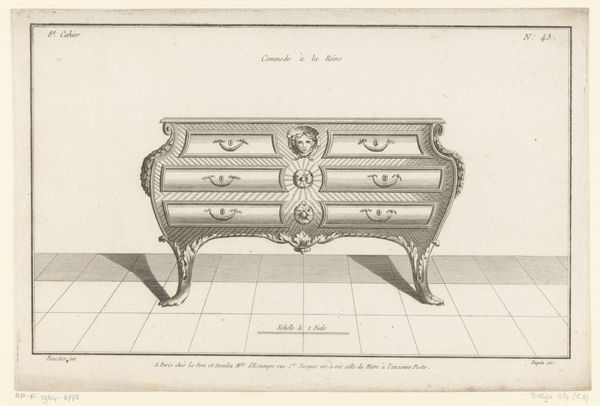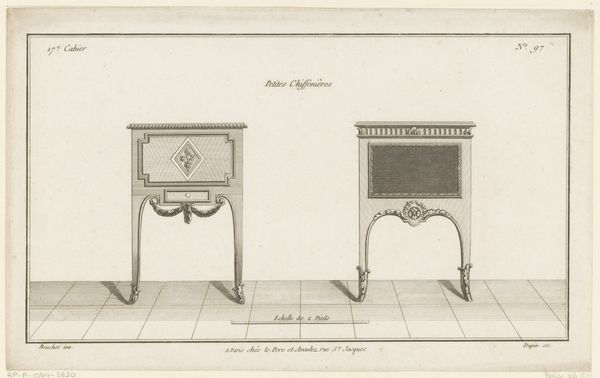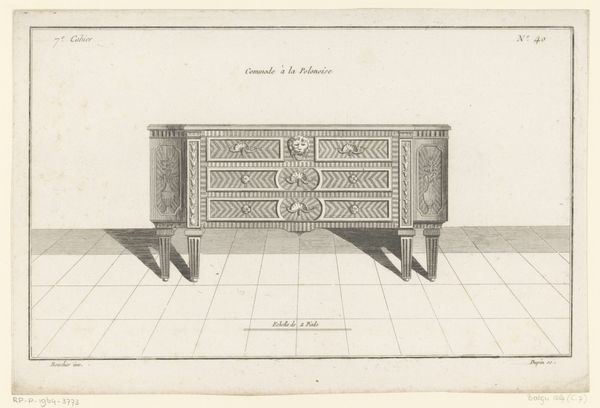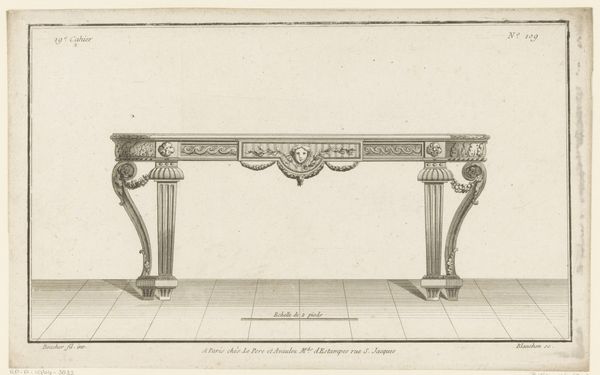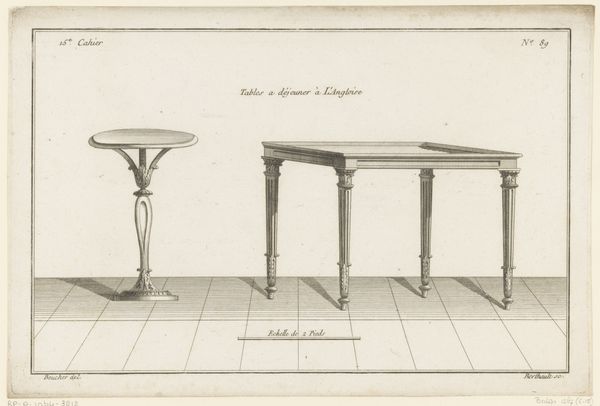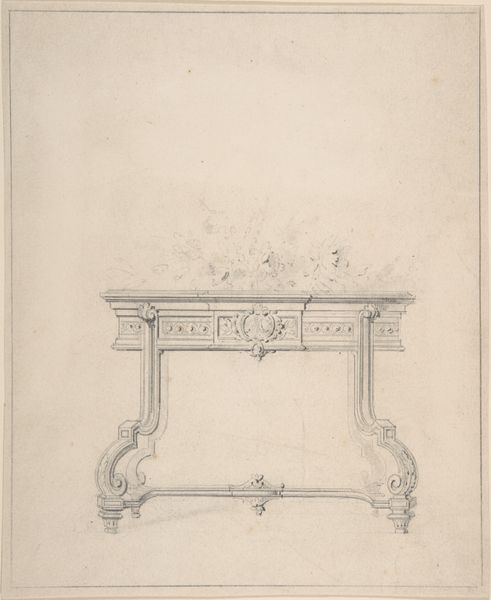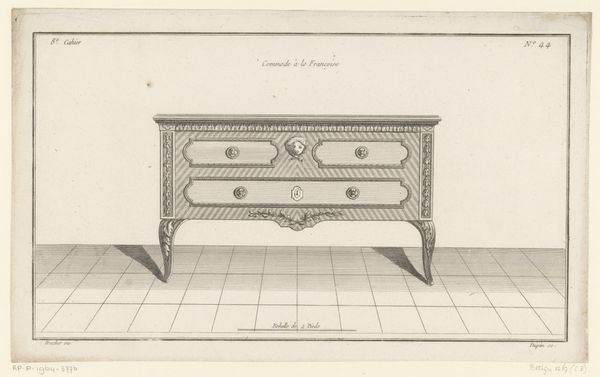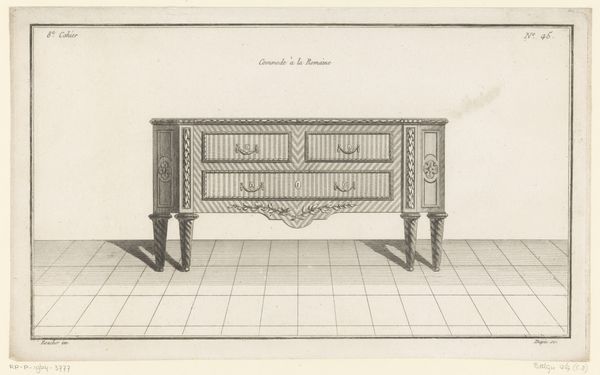
drawing, paper, pencil
#
drawing
#
neoclacissism
#
paper
#
form
#
pencil
#
line
Dimensions: height 197 mm, width 324 mm
Copyright: Rijks Museum: Open Domain
Editor: Here we have "Bureau met leeuwenkop", or "Desk with Lion's Head," a pencil and ink drawing on paper by Nicolas Dupin, dating from around 1772 to 1779. It depicts a design for a desk in the Neoclassical style, with careful linework. What historical contexts illuminate this piece for you? Curator: Well, seen through a historical lens, this design reflects the ascendance of Neoclassicism in the late 18th century, a style embraced by the French aristocracy prior to the Revolution and appropriated as its aesthetic by the emerging bourgeoisie in Europe. Think about the role of furniture and design during this period. It's no longer just about utility; it's a potent signifier of class and taste, especially with the rise of these new social orders. The lion's head motif, and indeed all the classical details, are about connecting to an imagined golden age to provide authority and respectability. Editor: It’s interesting how the elite uses artistic expression to shore up legitimacy. Were designs like this widespread or mostly for an exclusive circle? Curator: These designs circulated widely within elite circles, fueled by publications and pattern books. They were a key mechanism through which taste was disseminated and standardized. Think about the influence of academies and royal workshops during this period in controlling the design aesthetic. The meticulous rendering of the desk, down to the shadowing, makes me consider how this would influence how others perceived status. Who has access to what based on the cultural aesthetic being shown here. Editor: So it’s less about the desk itself, but more about the ideas and associations it represents? Curator: Exactly. It's about power, status, and cultural capital. These meticulously detailed designs become part of a broader discourse, shaping social identities and reinforcing class hierarchies, particularly given what objects could then circulate given different class statuses. Editor: This has given me a richer understanding of how social dynamics were interwoven with artistic expression during this period. Curator: Yes, understanding those intersections helps us to unravel so much about the past.
Comments
No comments
Be the first to comment and join the conversation on the ultimate creative platform.
